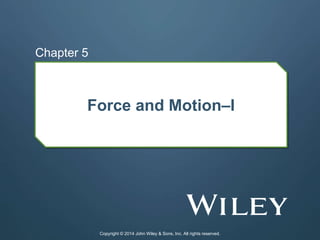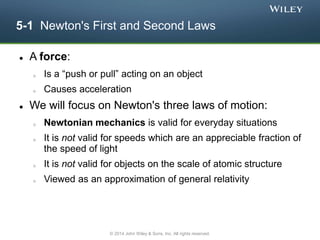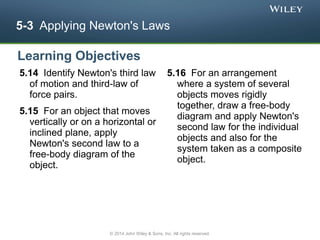This document details Newton's first and second laws of motion, explaining the concept of force as a vector quantity and its role in causing acceleration. It introduces free-body diagrams for analyzing forces acting on objects and discusses the definitions and calculations related to mass, weight, normal force, friction, and tension. Additionally, it outlines the principles of Newton's third law and provides examples and learning objectives related to applying these laws to various physical scenarios.



















































